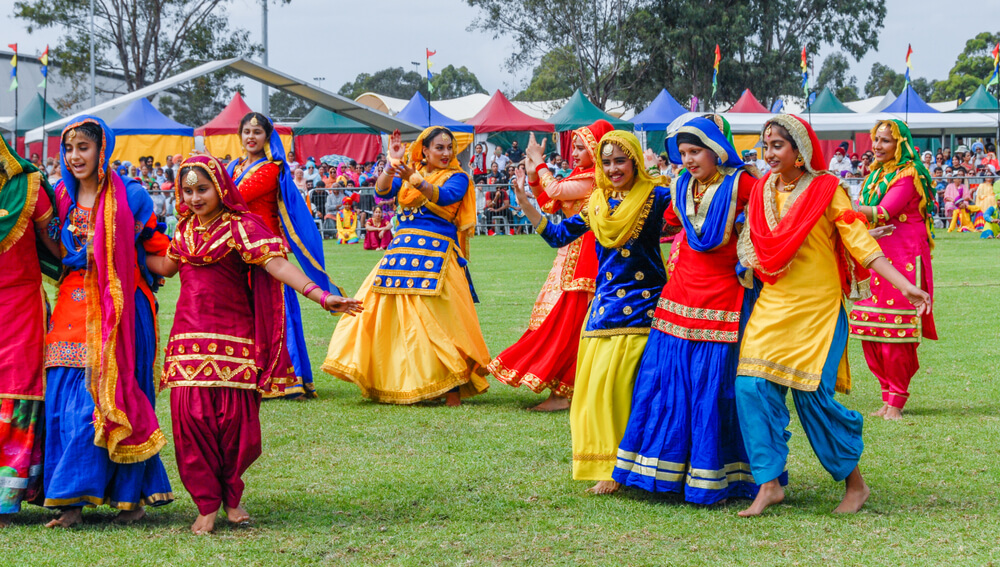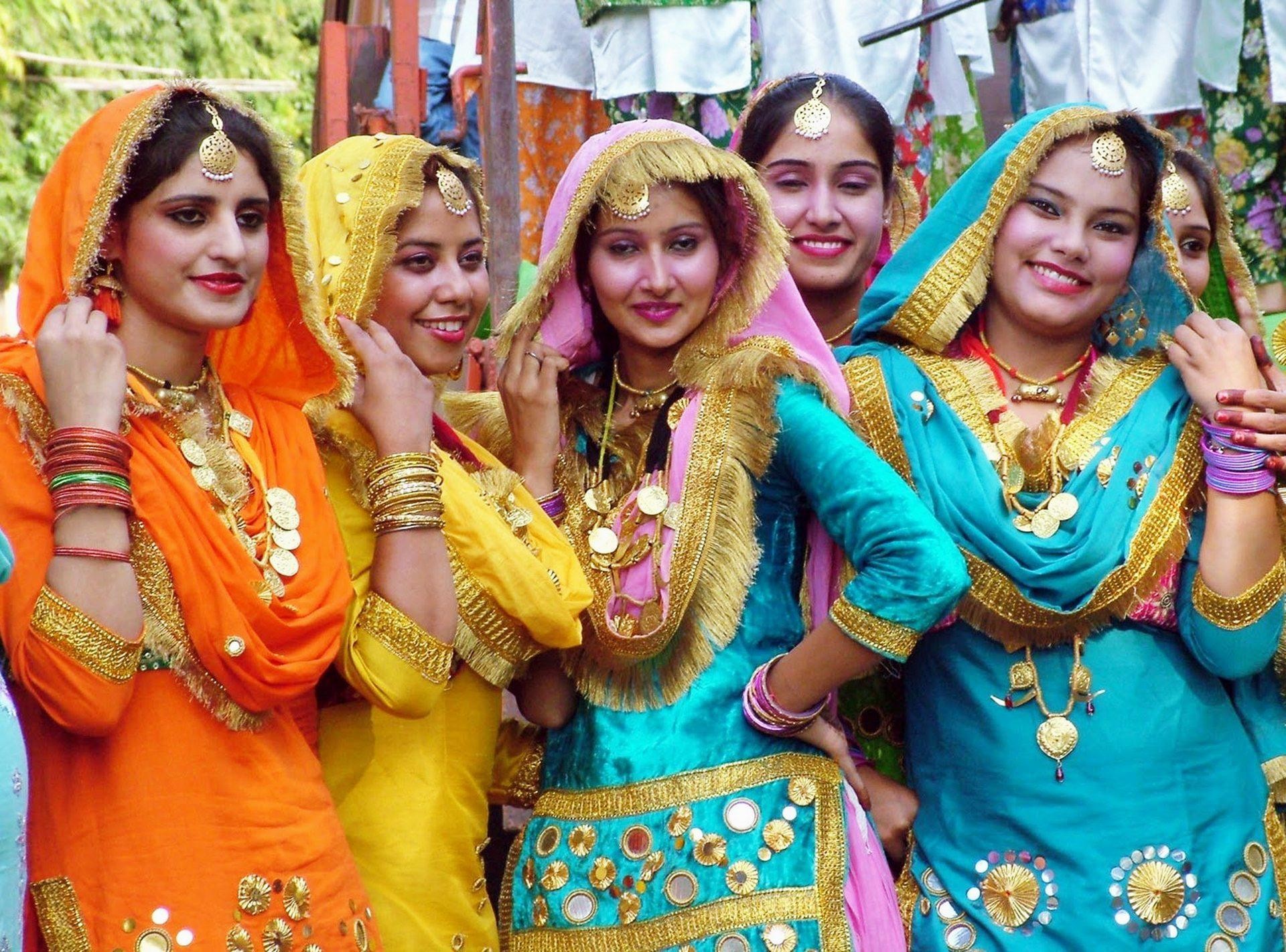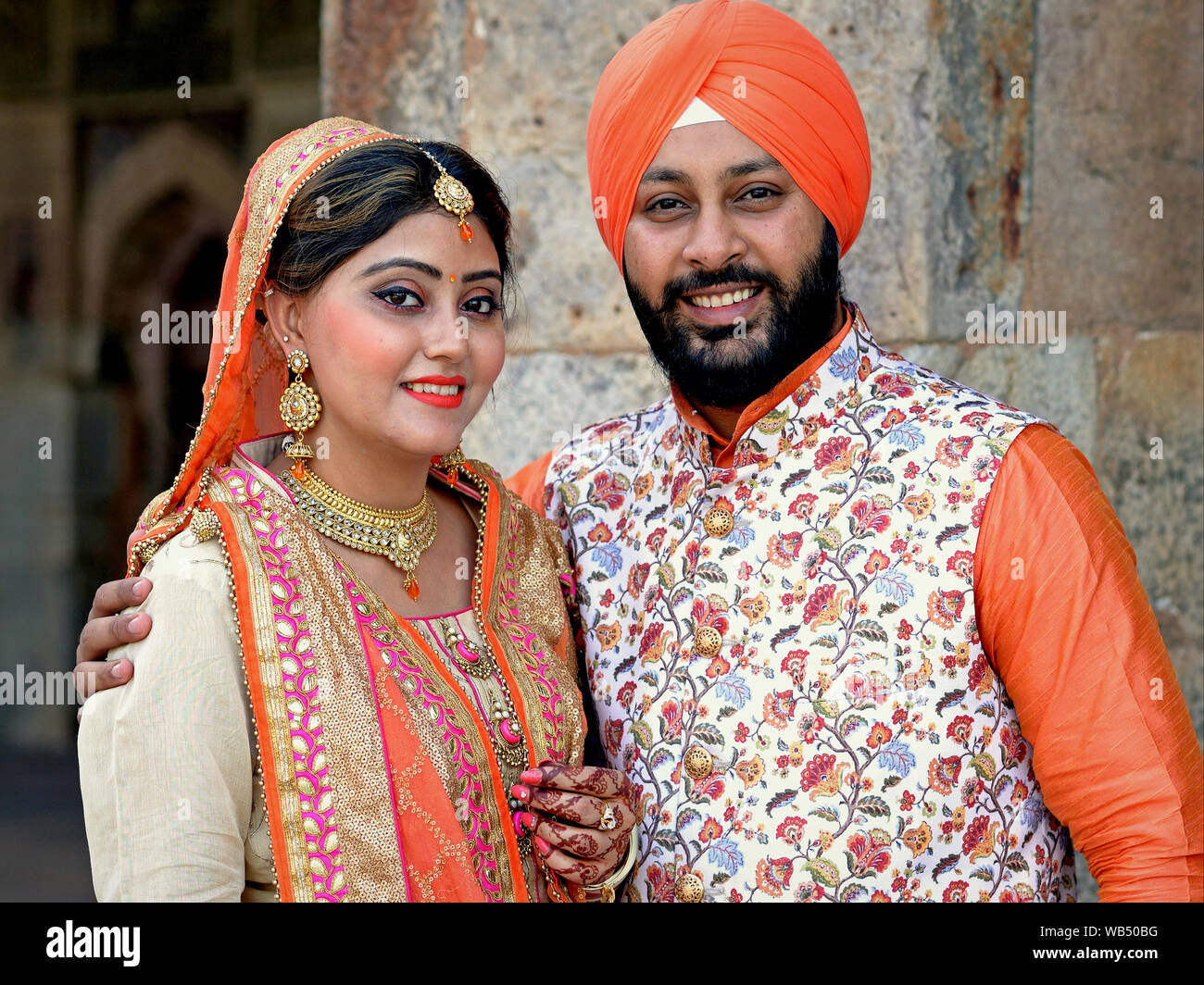Punjabi Virsa Indianapolis - Connecting Cultures
It's truly a wonderful thing, seeing how cultures from all corners of the world find a way to make a home in new places, and Indianapolis is certainly one of those spots that opens its arms to different traditions. There is, for instance, a deep connection to Punjabi heritage, or "virsa," that quietly thrives here, a living thread that ties people back to their origins while also weaving into the local fabric. You might be surprised, just how much of this rich cultural expression makes itself known, in a way, through various community efforts and personal connections.
The Punjabi language itself, is that, a really remarkable thing, spoken by an incredible number of people across the globe. You see, more than 130 million individuals, from India and Pakistan primarily, call Punjabi their mother tongue. This makes it, quite remarkably, the tenth most commonly spoken language on our planet, holding a special place among the respected tongues of South Asia. It's a language that carries stories, songs, and a way of seeing the world, so it's understandable why it travels with people.
This language and the culture it carries, originally comes from the Punjab region of the Indian subcontinent, which stretches across parts of what we now know as Pakistan and India. It serves as the native speech for Punjabi people, and actually holds official status in several Indian states. The presence of Punjabi speakers extends far beyond its native lands, reaching places like Kenya, Singapore, the United Kingdom, Canada, the United Arab Emirates, and, of course, the United States, too it's almost everywhere, you know, wherever Punjabi people have settled and built new lives.
Table of Contents
- What Makes Punjabi Virsa So Special?
- The Language of Many Homes - Punjabi Virsa Indianapolis
- How Does a Community Keep its Roots Alive?
- Celebrating Punjabi Virsa in Indianapolis - A Shared Story
- Why is Punjabi Language So Important to its People?
- Passing Down the Language - The Future of Punjabi Virsa Indianapolis
- What is the True Spirit of Punjabi Virsa?
- Building Bridges with Punjabi Virsa Indianapolis
What Makes Punjabi Virsa So Special?
You might wonder, what truly gives Punjabi heritage its distinct charm and significance? Well, it's pretty simple, actually, it comes down to a blend of history, language, and a way of life that has been passed down through generations. The language itself, often spelled "Punjabi" in the older British style, is the more common way people write it, even if academic circles might prefer a slightly different form. This shows, in a way, how tradition often holds a strong place in everyday use. It's a language that has seen centuries of stories, struggles, and triumphs, carrying the weight of a people's experience within its sounds and words. So, when people speak Punjabi, they are not just talking; they are connecting with something much older and deeper, a kind of shared memory.
The importance of Punjabi goes beyond just being a means of talking; it is, quite literally, a cornerstone of identity for millions. It holds a very respected position, you know, as one of the most significant languages in South Asia. This isn't just about numbers, though the fact that over 130 million people around the world speak it certainly speaks volumes. It's about the cultural expressions that flow through it, the poetry, the music, the proverbs that shape how people think and feel. This rich tradition, so, it’s what people bring with them when they move, creating new pockets of Punjabi culture, even in places as far away as Indianapolis, preserving their distinct heritage in a new setting.
The Language of Many Homes - Punjabi Virsa Indianapolis
It's quite something, to think about how a language, born in a specific part of the world, finds its way into so many different countries, isn't it? Punjabi, for instance, has truly spread its wings, finding a home in places far from its original land. You find people who speak Punjabi, naturally, in countries like Kenya, Singapore, the United Kingdom, Canada, the United Arab Emirates, and, of course, the United States. This global spread is a testament to the movement of people, those who carry their language and customs with them as they build new lives and communities. So, when we talk about Punjabi Virsa in Indianapolis, we are really talking about a piece of this larger, worldwide story, a local chapter in a very global narrative of cultural persistence.
The fact that Punjabi is spoken in so many different countries means that it has adapted, in some respects, to various settings, yet it has kept its core spirit. It's a bit like a tree whose roots spread far and wide, but the tree itself remains distinct. In places like Indianapolis, people who have come from the Punjab region, or whose families have, keep the language alive through daily conversation, through family gatherings, and through community events. This constant use, pretty much, ensures that the language remains a living, breathing part of their lives, not just a relic of the past. It shows how people, wherever they are, find ways to maintain their connection to what truly defines them, allowing the spirit of Punjabi heritage to flourish even in a distant land.
How Does a Community Keep its Roots Alive?
It's a really interesting question, how a group of people, having moved to a new country, manages to hold onto what makes them, well, them. This is something that communities all over the world face, and the Punjabi community, including those who have made Indianapolis their home, is no different. One of the most important ways, you know, is through the language itself. When children grow up hearing and speaking Punjabi at home, they are, in a way, soaking up generations of shared experience and a particular outlook on life. It's more than just words; it's the rhythm of conversation, the specific phrases that carry deep meaning, the jokes, and the stories that shape who they are. This continuous verbal connection acts as a very strong bond to their origins.
Beyond language, there are other ways people keep their heritage strong. It often involves sharing traditional foods, celebrating holidays in the way they always have, and passing down family stories. These customs, frankly, are like anchors, holding people to their past even as they build a future in a new place. For the Punjabi community, this might mean gatherings for festivals like Vaisakhi, or simply sharing meals that taste like home. These moments, basically, are not just about having fun; they are about teaching the younger generation what it means to be Punjabi, what their heritage stands for. It's a conscious effort, really, to make sure that the unique essence of Punjabi virsa continues to thrive, no matter where people find themselves.
Celebrating Punjabi Virsa in Indianapolis - A Shared Story
When a group of people brings their heritage to a new place, it becomes, in a way, a shared story, not just for them but for the wider community around them. In Indianapolis, the presence of Punjabi virsa adds a distinct thread to the city's overall cultural fabric. It's about how people come together to celebrate their traditions, and in doing so, they often invite others to experience a piece of their world. This can happen through public events, perhaps, or simply through the everyday interactions that occur in neighborhoods and workplaces. The beauty of it, in fact, is that these celebrations are not just for those who share the heritage; they become a chance for everyone to learn something new and to appreciate the rich variety of human experience.
The act of celebrating Punjabi culture in Indianapolis is, quite literally, a way of keeping it alive and vibrant. It involves things like teaching traditional dances, sharing music, or even just telling stories that have been part of the Punjabi oral tradition for a long time. These activities, you know, create spaces where people can connect with their roots, and where the younger generation can feel a sense of pride in their background. It’s about building a sense of belonging, making sure that even far from their ancestral lands, the spirit of Punjab continues to be felt. This shared story, therefore, helps to build bridges between different groups of people, making Indianapolis a richer and more understanding place for everyone who lives there.
Why is Punjabi Language So Important to its People?
You might truly wonder, why a language holds such a deep and lasting meaning for a group of people. For the Punjabi people, their language is much more than just a tool for talking; it is, pretty much, the very heart of their identity. It's the language of their ancestors, the sounds of their childhood, and the voice of their collective memory. It holds official status in Indian states, which speaks to its recognized importance within the country. In the state of Punjab, for instance, it's a very big deal; the government has a policy where Punjabi is either the main way instruction happens in schools, or it's one of the three languages all students must learn. This ensures, you know, that the next generation continues to speak, read, and write in their mother tongue, keeping it alive and strong.
The enduring presence of Punjabi as a mother tongue, despite people moving to different parts of the world, shows just how much it means to them. It's a direct link to their heritage, a way to connect with family members who might live far away, and a way to understand the poetry and literature that defines their culture. The older British spelling, "Punjabi," is still the most common way people write it, which shows, in a way, how deeply rooted certain customs are. This language, therefore, acts as a vessel for cultural values, for historical narratives, and for the unique way Punjabi people express themselves. It is, quite simply, a fundamental part of who they are, a constant reminder of their origins and a source of deep personal pride.
Passing Down the Language - The Future of Punjabi Virsa Indianapolis
The continued life of Punjabi heritage, especially in a place like Indianapolis, really depends on how well the language gets passed from one generation to the next. It’s not always easy, you know, when children grow up in a place where English is the main language of schools and public life. But families and community groups work very hard to make sure Punjabi continues to be spoken and understood. This often means speaking Punjabi at home, even if it's mixed with English, and sometimes attending special classes or cultural gatherings where the language is used. It’s a conscious effort, basically, to keep the verbal connection strong, ensuring that the unique sounds and expressions of Punjabi remain a part of their daily lives.
For the future of Punjabi Virsa in Indianapolis, these efforts to keep the language alive are absolutely essential. When young people can communicate in Punjabi, they can connect more deeply with their elders, understand traditional stories, and appreciate the nuances of their cultural expressions. This helps them feel a stronger sense of belonging and identity. It’s about more than just words; it’s about preserving a way of thinking and feeling that is tied to the language. So, the ongoing commitment to using and teaching Punjabi, in a way, secures the future of this rich heritage, allowing it to continue to flourish and contribute to the diverse cultural landscape of Indianapolis for many years to come.
What is the True Spirit of Punjabi Virsa?
You might be curious, what truly lies at the core of Punjabi heritage, beyond just the language and the customs? Well, it's, in a way, a spirit of generosity, warmth, and an unwavering sense of community. Punjabi culture is widely known for its open-hearted hospitality, where guests are treated with immense respect and care. This sense of welcome extends not just to those who share the same background, but to anyone who comes with an open heart. There is, too it's almost, a natural inclination to share, to celebrate together, and to support one another, which forms a very strong bond among people.
This spirit also includes a remarkable resilience and a joy for life, even when facing challenges. The history of the Punjabi people is filled with stories of hard work, determination, and a deep connection to the land and its bounty. This is reflected, you know, in their vibrant music, their energetic dances, and their delicious food, all of which are expressions of a people who truly appreciate life. It's a culture that values family connections, respect for elders, and a strong work ethic. So, when we talk about Punjabi virsa, we are really talking about these fundamental values that guide how people live, how they interact, and how they build a sense of belonging wherever they are, even in a place like Indianapolis, where this spirit continues to shine through.
Building Bridges with Punjabi Virsa Indianapolis
The presence of Punjabi heritage in Indianapolis does more than just provide a connection for those who share that background; it also creates opportunities to build bridges between different groups of people. When a culture is openly shared, it allows others to learn, to understand, and to appreciate perspectives that might be different from their own. This exchange, you know, is incredibly valuable for any city that prides itself on its diversity. It’s about seeing the unique contributions that each group brings to the collective experience, and how these different threads can weave together to create a richer, more interesting social fabric. So, the celebrations, the language, and the community spirit of Punjabi people in Indianapolis, in a way, become gifts to the entire city.
These connections can happen in many ways, perhaps through cultural festivals where traditional music and dance are shared, or through community events that welcome everyone to experience Punjabi food and hospitality. It’s about creating moments where people from different backgrounds can come together, talk, and find common ground. This kind of interaction, basically, helps to break down barriers and build a stronger sense of community for everyone. The presence of Punjabi virsa in Indianapolis is, quite literally, an invitation to explore, to learn, and to celebrate the wonderful variety that makes our world so interesting. It’s a testament to how cultural exchange can truly enrich the lives of all who participate, fostering greater understanding and mutual respect among neighbors.

Punjabi Culture | A Vibrant Culture with Rich History

Wallpaper Punjabi (74+ images)

Punjabi Traditional Dress For Men